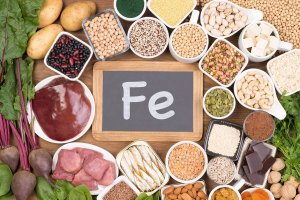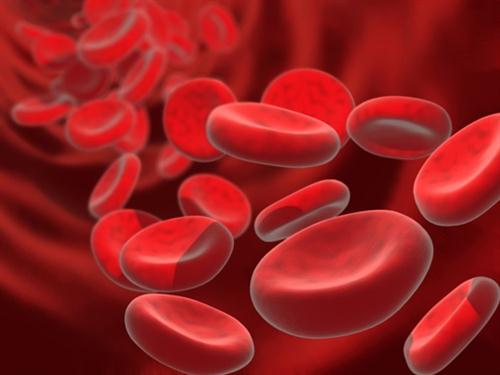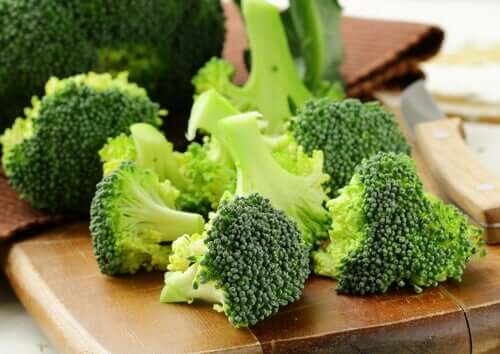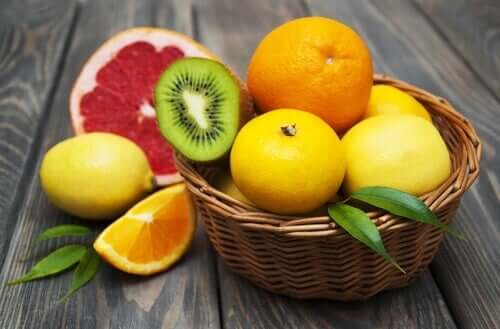Iron-Deficiency Anemia Diet: The Foods to Include


Written and verified by the nutritionist Eliana Delgado Villanueva
A lack of iron can affect multiple organs and is usually caused, to a greater extent, by an inadequate diet. Do you know what the role of an iron-deficiency anemia diet is?
According to the Spanish Society of Cardiology, the main solution to this problem lies in consuming iron supplements and making dietary changes. This is why we decided to share the ideal foods to include in an iron-deficiency anemia diet.
Anemia is when the body doesn’t have enough healthy red blood cells. Red blood cells provide the tissues with oxygen. Also, your body needs iron to take oxygen from the lungs and carry it to other parts of the body.
Although there are many types of anemia, iron-deficiency anemia occurs when the body doesn’t have enough iron. Iron helps make red blood cells. Iron-deficiency anemia is the most common type of anemia.
What’s iron-deficiency anemia?
Anemia is a blood disease that’s defined as a decrease in hemoglobin concentration, with normal values generally being above 12 grams per deciliter in women and 13.5 in men.
When blood hemoglobin levels drop, symptoms such as tiredness, paleness, irritability, less exercise tolerance, and an accelerated heart rate occur.
This article may also interest you: Treat Iron Deficiency Anemia with 5 Natural Remedies
The causes of iron-deficiency anemia

The bone marrow produces healthy red blood cells. These carry oxygen to the body’s tissues, circulating in the body for 120 days. Iron is an important part of red blood cells. Without iron, the blood can’t transport oxygen effectively. Food usually provides the body with the iron it needs.
Thus, iron-deficiency anemia occurs when your iron reserves drop. This can occur because:
- You lose more red blood cells and iron than your body can replace – for example, during a bleed
- Your body doesn’t absorb iron properly
- You aren’t eating enough foods that contain this mineral
- Your body needs more iron than usual (for example, in pregnant or lactating women)
- Your body may not absorb enough iron from your diet (for example, due to Crohn’s or celiac disease)
- You follow a strict vegetarian diet
Diet and iron-deficiency anemia
If you follow a balanced diet, you shouldn’t suffer from iron-deficiency anemia, unless you have unknown blood loss. Iron requirements depend on sex and age:
| Age | Women (mg/day | Men (mg/day) |
| 1-9 | 10 | 10 |
| 10-19 | 15 | 12 |
| 20-49 | 15 | 10 |
| >50 | 10 | 10 |
During the second half of pregnancy, the nutritional requirements of iron increase to 25 mg/day. During lactation, that reduces to 15 mg/day.
The foods to include in an iron-deficiency anemia diet
Firstly, you need to detect the causes of the disorder in order to improve them and, thus, reverse the damage. Then, you need to take iron supplements until the problem resolves itself. After that, you must continue to follow an iron-rich diet.
To maintain adequate iron levels, you must include the following foods in your diet:
Appetizers

Combine vegetables rich in iron and vitamin C, such as broccoli, bell peppers, chard, spinach, or tomatoes. You can add them to rice, pasta, or legumes as salads or stir-fries.
You should also read: Baked Broccoli and Ham Casserole, an Easy Homemade Recipe
Main courses:
Red meat is a great ally, but it’s important to choose lean cuts to minimize your consumption of saturated fat and cholesterol. It’s best to consume it three or four times a week in cases of anemia. In a balanced diet, experts recommend consuming red meat once a week.
In addition, you can consume canned and fresh shellfish (clams, mussels, and cockles). You can distribute a can throughout the day in salads, pasta, and rice. An 80 g (3 oz) can of cockles contains almost 13 mg of iron (a healthy woman of childbearing age needs 18 mg a day).
Likewise, legumes represent one of the greatest natural sources of iron. For that reason, it’s important for you to include them in your diet. Lentils are especially rich in iron. In addition, they’re rich in protein and low in fat.
Desserts

In this regard, you can include the following fruits in desserts: orange, tangerine, grapefruit, melon, papaya, strawberries, kiwi, or pineapple. This is because the vitamin C and citric acid they contain will improve the absorption of plant-based non-heme iron.
In conclusion, we hope that this iron-deficiency anemia diet can help you improve your condition. Keep in mind that a nutritionist is the best specialist to guide you and give you more guidelines that you must follow.
All cited sources were thoroughly reviewed by our team to ensure their quality, reliability, currency, and validity. The bibliography of this article was considered reliable and of academic or scientific accuracy.
- DeLoughery TG. Iron Deficiency Anemia. Med Clin North Am. 2017 Mar;101(2):319-332. doi: 10.1016/j.mcna.2016.09.004. Epub 2016 Dec 8. PMID: 28189173.
- Li N, Zhao G, Wu W, Zhang M, Liu W, Chen Q, Wang X. The Efficacy and Safety of Vitamin C for Iron Supplementation in Adult Patients With Iron Deficiency Anemia: A Randomized Clinical Trial. JAMA Netw Open. 2020 Nov 2;3(11):e2023644. doi: 10.1001/jamanetworkopen.2020.23644. PMID: 33136134; PMCID: PMC7607440.
- Hallberg L, Brune M, Rossander L. The role of vitamin C in iron absorption. Int J Vitam Nutr Res Suppl. 1989;30:103-8. PMID: 2507689.
This text is provided for informational purposes only and does not replace consultation with a professional. If in doubt, consult your specialist.








